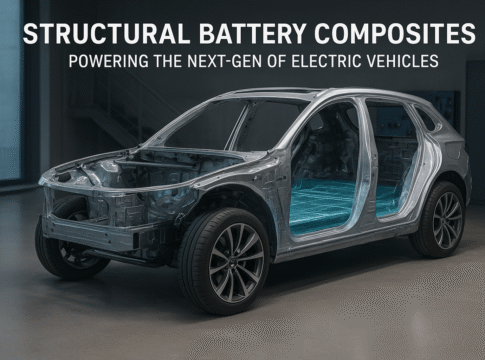For years, blockchain and cryptocurrencies have faced criticism for being energy-intensive and environmentally damaging — especially networks that rely on Proof-of-Work (PoW) mining like Bitcoin.
But the narrative is changing fast. Welcome to Green Mining 2.0, a new era where blockchain innovation meets sustainability. From carbon-neutral consensus models to renewable-powered mining farms, this revolution aims to make crypto not just profitable — but planet-friendly.
What Is Green Mining 2.0?
Green Mining 2.0 refers to a new generation of energy-efficient blockchain systems and sustainable crypto mining practices.
Instead of relying solely on high-power GPUs and fossil-fuel energy, these new models use:
-
Proof-of-Stake (PoS) or Delegated Proof-of-Stake (DPoS) algorithms
-
Renewable energy sources such as solar, hydro, and wind
-
Recycling of waste heat from mining farms
-
Carbon offset programs and green blockchain certification
Essentially, Green Mining 2.0 shifts focus from “more power = more profit” to “less impact = more efficiency.”
How Traditional Mining Consumes Energy
The classic Proof-of-Work (PoW) model — used by Bitcoin and early blockchains — requires miners to solve complex cryptographic puzzles.
This consumes massive computing power, with global energy consumption often comparable to entire countries.
-
In 2023, Bitcoin’s energy use reached over 120 TWh per year, nearly equal to Argentina’s electricity demand.
-
Carbon emissions from PoW mining exceeded 65 million tons of CO₂ annually.
That’s why the blockchain community began seeking alternatives — leading to Green Mining 2.0.
Sustainable Consensus Models
1. Proof-of-Stake (PoS)
Instead of burning electricity to solve puzzles, PoS networks select validators based on their stake (the amount of cryptocurrency they hold).
1. Energy savings: Up to 99.95% lower energy usage compared to PoW.
2. Used by: Ethereum (after “The Merge”), Cardano, Solana, and Polkadot.
2. Proof-of-Space-Time (PoST)
Validators provide storage space rather than computational power.
1. Used by: Chia Network, Filecoin.
2. Benefit: Uses existing disk space — not continuous GPU power.
3. Proof-of-Authority (PoA)
Selected, verified nodes validate transactions based on reputation.
1. Used by: VeChain, Energy Web Chain.
2. Benefit: Fast, scalable, low-energy blockchain ideal for enterprise use.
Blockchain Meets Renewable Energy
Green mining doesn’t just mean better algorithms — it means cleaner power sources.
Examples:
-
Iceland & Canada — mining farms use geothermal and hydropower, drastically cutting emissions.
-
El Salvador — operates volcano-powered Bitcoin mining using geothermal energy.
-
Solar-powered rigs — companies like Genesis Mining and Sun Mining run operations entirely on solar farms.
These efforts prove that blockchain can thrive without harming the environment.
Real Projects Driving Green Blockchain
| Project | Focus | Key Sustainability Feature |
|---|---|---|
| Ethereum 2.0 | Smart Contracts | 99% less energy after Merge |
| Chia Network | Green Storage Blockchain | Proof-of-Space-Time algorithm |
| Algorand | Carbon-Negative Blockchain | Automatically offsets emissions |
| Energy Web Chain | Clean Energy Market | Blockchain for renewable trading |
| Cardano | Sustainable PoS Network | Community-driven carbon programs |
These real-world examples highlight how innovation and sustainability can go hand in hand.
The Business Case for Green Mining
Green blockchain isn’t just good for the planet — it’s good for profits.
-
Lower Energy Costs: Energy-efficient algorithms drastically cut operational expenses.
-
Investor Appeal: ESG (Environmental, Social, and Governance) investors prefer sustainable crypto assets.
-
Regulatory Support: Governments are rewarding low-carbon crypto projects with tax incentives.
As sustainability becomes a core business metric, eco-friendly blockchain networks will lead the next investment wave.
Challenges & Road Ahead
Even with progress, Green Mining 2.0 faces hurdles:
-
Limited renewable energy access in some regions.
-
E-waste from obsolete mining rigs.
-
Need for universal green certification for blockchain projects.
However, collaborations between blockchain developers, renewable energy providers, and policymakers are paving the way for scalable, sustainable solutions.
Future Outlook
By 2030, expect most new blockchains to be energy-neutral or carbon-negative.
We may also see:
-
AI-optimized energy usage in mining networks.
-
Smart grids that automatically balance crypto demand with renewable supply.
-
Government-approved carbon tokens tied to blockchain verification systems.
Conclusion
Green Mining 2.0 represents a transformational leap for the crypto industry.
It’s proving that blockchain technology can be both innovative and sustainable — a perfect balance between profit and planet.
As more projects adopt renewable energy and energy-efficient consensus models, crypto’s image will evolve — from being a climate problem to becoming a solution for a greener digital future.








